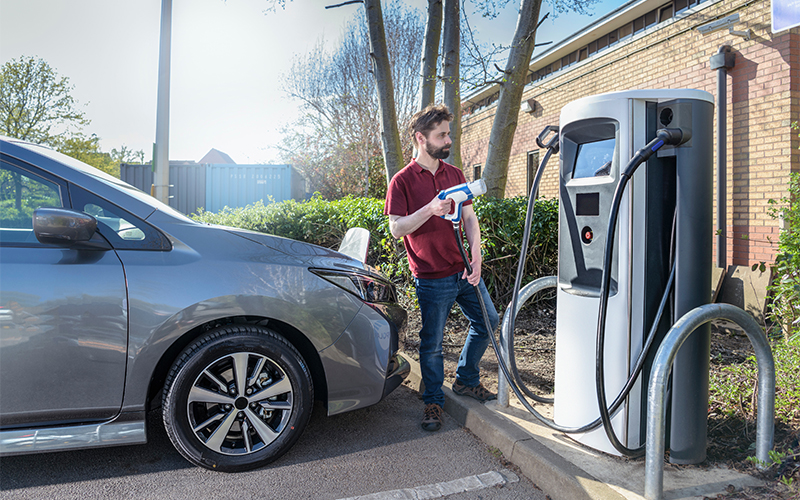Sales and Fulfillment
Drones and Robotics: The Future of Warehousing
In a mood to change the curtains? Remembered an important birthday a tad too late? Or simply forgot to order groceries? Nth-hour shopping panic has never been so peaceful thanks to the convenient next-day and 10-minute deliveries.
The real action, however, is behind the scenes, in a futuristic warehouse where autonomous and assisted bots are locating the purchased product, accurately populating the package, lining it up for delivery and updating the inventory status on the go, with minimal human intervention.
Warehouses are no longer considered static endpoints where goods are placed for long-term storage. They have morphed into dynamic centers, where goods are received, sorted and dispatched, often in hours, in addition to the execution of value-added services, such as order postponement, reverse logistics, etc.
While the costs associated with a warehouse tend to vary by its type and operations, about 20% of a company’s total logistics cost is consumed by warehousing (excluding carrying cost), with the largest component being labor in a non-automated warehouse. This is more so in a fulfillment warehouse (a warehouse that distributes directly to consumers), with half the labor budget devoted to picking.
Seasonality plays a key role in the demand for labor at fulfillment warehouses. Seasonal and holiday demand is met by onboarding resources to meet this peak volume and offboarding them when demand dies down.
Resourcing during the pandemic has been extremely challenging. Demand completely outstripped supply (think of the demand for toilet paper), while workers were asked to stay in quarantine when infected, thus shrinking the labor pool.
No longer a thing of science fiction, autonomous robots modernizing supply chains to futuristic levels is a reality today
Picking efficiencies are driven by picking automation (“Picker to Part” or “Part to Picker”), volume and the special handling needs and route strategy. High-volume picking lends itself to higher ROI on automation, as seen in fulfillment warehouses.
No longer a thing of science fiction, autonomous robots modernizing supply chains to futuristic levels is a reality today and are delivering significant value improvement along the way with the following key benefits:
- Improved speed and accuracy of picking functions, with intelligence to learn and improve further
- Higher efficiency and accuracy in fulfilling orders round the clock
- Ability to elevate the quality of a human-ware set-up where machines and humans work side by side
- Reduced risk of injury or hard labor, especially relevant in hazardous conditions
Back to the Future
Amazon’s five-storied, 3.6 million square foot warehousing facility in Tennessee is probably the best example to cite when talking about smart and intelligent warehouses. With highly automated warehouse space, orders move from shelving into bins and from bins into boxes with incredible agility and accuracy. The AI backbone reads, senses and suggests, and the autonomous robots play fetch, straight into delivery vans, passing through a few human-led inspection points. Humans, otherwise, are rarely required to move around here.
Autonomous robots, including drones, are certainly in high demand as customer expectations and order volumes become unsustainable for traditional approaches. Robots —whether controlled or autonomous— can be used for various purposes in a warehouse, such as the movement of mobile racks to transport goods to the customer, sorting and labelling products, packaging finished products and even transporting pallets across the warehouse.
The Industrial Internet of Things (IIoT) has led to an interconnected network of Warehouse Management Systems (WMS) that are leveraging these technologies to make inventory management more efficient. Major logistics companies are now experimenting with last-mile drone deliveries as well.
Incorporating these technologies [AI and ML] directly accounts for higher accuracy, operational efficiency and improved customer satisfaction
While that exercise is still in progress, the application of drones in an indoor setting has also become a feasible reality with the advent of obstacle and collision avoidance systems. Using optical sensors, drones can scan tags and bar codes to capture and share information with the WMS. In parallel, technology advancements such as haptic sensors are improving the cognitive skills of robots. It wouldn’t be surprising in a few years to see a robot picking up an egg with the required fragility and modifying its grip the next second when pulling out heavier objects.
Robots are not the only futuristic display in today’s smart warehouses. Integration of AI and ML in the IT backbone is also helping businesses do a lot more with logistics and tracking technology. Industrial warehouse technology is making huge headway in adoption at all levels of supply chain data processing and analytics. Labor-intensive tasks such as payment processing, order dispatching, updating/tracking of information and more can now be accomplished automatically behind the scenes with advanced automation.
Incorporating these technologies directly accounts for higher accuracy, operational efficiency and improved customer satisfaction as companies are positioned to deliver better quality products in shorter timelines. This also enables companies to be better equipped in handling changes in demand, while reducing errors, risks, labor and storage costs and, consequently, providing faster ROI.
There are still several challenges to be overcome. Automation tends to lock in warehousing capability to specific product dimensions, characteristics and volume requirements. The flexibility of automation technologies will be critical to their adoption. Consumer demand is difficult to predict in the best of times, let alone in pandemic times.
Academics recommend at least a five-year outlook for the equipment/automation in the warehouse. It is challenging to work with such long planning horizons. Even the mighty “SCOT” (Supply Chain Optimization Technology) at Amazon has failed to accurately navigate the pandemic and guide the company. Amazon over-invested in warehouses and labor during the pandemic and is finding itself with significant overcapacity and excess labor, resulting in losses in 2022.
With all this being said, the supply chain sector is probably the sunshine sector leading the adoption of robotics around the world, bringing fiction to reality. Robots in movies are certainly entertaining, but the ones that bring my orders to me quickly with zero damage are the robot brigade I would root for most vehemently.
This article was first published on Nearshore Americas .






